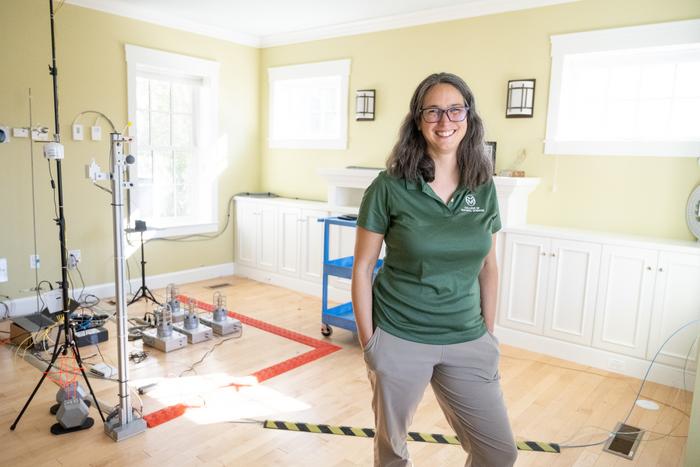Wildfire smoke lingers on surfaces in homes long after blaze is put out: researchers

Posted October 21, 2023 1:49 pm.
Last Updated October 21, 2023 1:53 pm.
Researchers in Colorado have found gases associated with wildfire smoke stick to indoor surfaces in homes long after nearby fires have been extinguished.
According to the study, published in the journal Science Advances, researchers at Colorado State University found that events like the wildfires in B.C., Alberta and Quebec this summer have serious exposure potential, not only during the event, but long after as well. The findings prove wildfire smoke can attach to surfaces like hardwood, tiles and carpet, but can also be removed by a simple surface cleaning.
Delphine Farmer, one of the study’s authors, says after a wildfire, smoke particles linger on surfaces in the home like a layer of dust. While opening windows to ventilate the space may provide temporary relief, she says once those windows are closed, the stuck particles will begin to pollute the air again.
“Then for hours, days, weeks afterwards, all of these surfaces will slowly release these gases back out. So what that told us is that there is this persistent source of wildfire smoke long after an event has ended,” she said.

To determine this, Farmer says researchers used a cocktail smoker and pine wood chips to make smoke in a house on the National Institute for Standards and Technology campus. She says they were able to conclusively prove that the smoke from the cocktail smoker was very similar to wildfire smoke from a pine forest.
The frequency and intensity of wildfires in Canada are increasing due to climate change. In Eastern Canada, studies have proven climate change more than doubled the likelihood of extreme fire weather this summer, according to World Weather Attribution.
Farmer says as wildfire seasons increase in intensity, it’s important for Canadians to think about how wildfires can affect human health indoors, not just outdoors.
“Now we know that air pollution, no matter how tightly you seal your house, is going to enter your house,” she said. “And the problem is that it’s going to stay there and it’s going to linger so that creates a long-term exposure.”
This adds to the body of knowledge Farmer says already exists about how wildfire events are dangerous for human health.
“Any amount of extra time you spend breathing any of those smoke gases is going to contribute to health effects,” Farmer said.
“How much? We don’t really know yet, scientists are still trying to figure out that piece of the puzzle. But I think it’s really important to understand how to reduce our exposure to known air toxins, anything that we know will damage health.”

Luckily, Farmer says researchers also found a way to effectively remove these toxins from indoor surfaces, and all it takes is a little house work.
Mopping, vaccuming and dusting were all proven to effectively remove the lingering toxic dust from surfaces in the home, Farmer said. She says this is what she hopes people will take away from their findings.
“I hope that people realize just going inside doesn’t mean you no longer have any exposure to outdoor air pollution,” she said.
“You have some control over the air quality in your home. I hate cleaning and I hate mopping, but it means that I have the power to improve the air quality in my house.”








